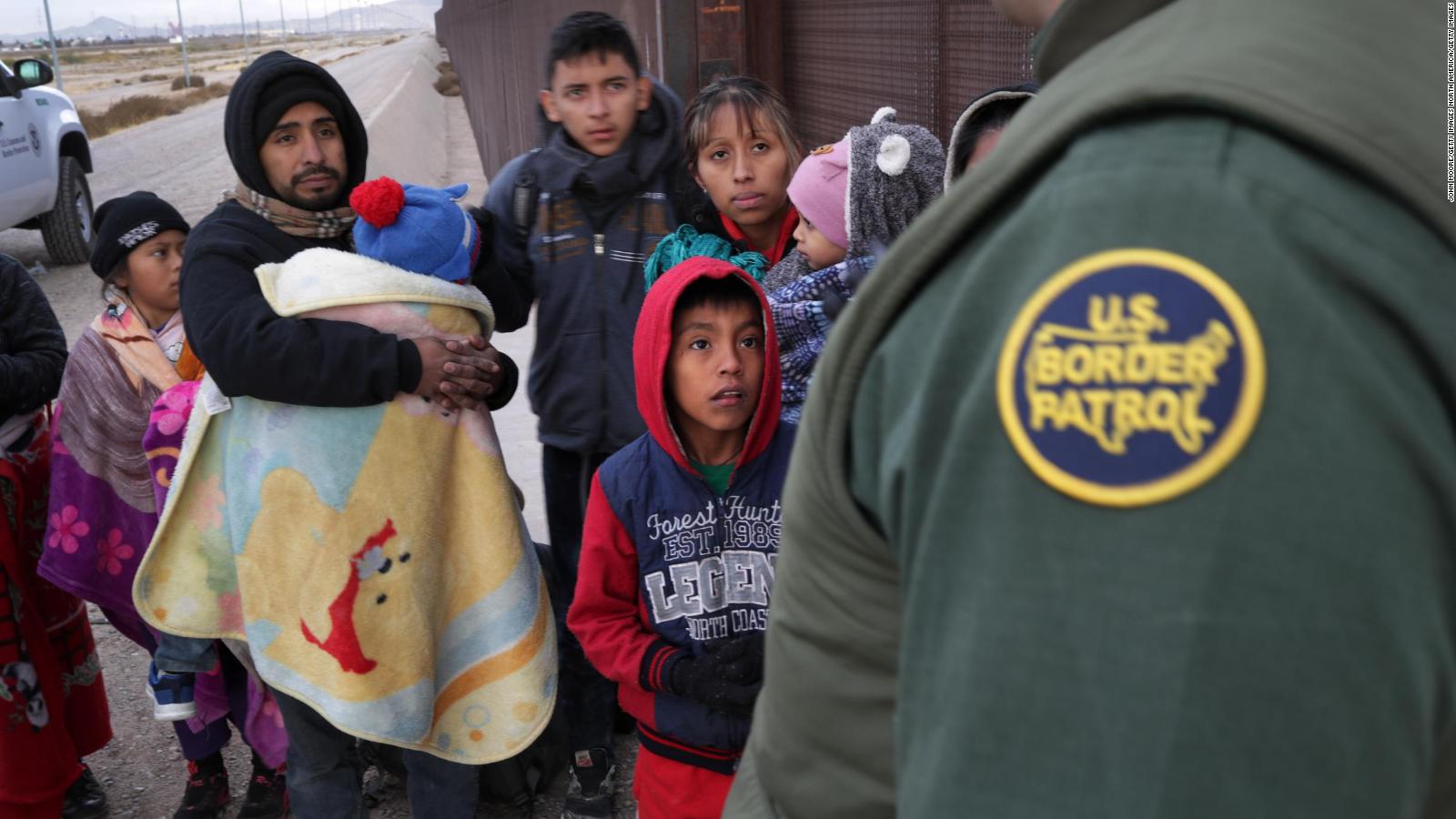(Trends Wide Spanish) — The United States Supreme Court decided that the controversial border restriction known as Title 42, implemented under the Donald Trump government, will remain in force while pending legal challenges are resolved.
The decision — ensuring that federal officials will be able to continue to expedite migrants at borders for months to come — was a victory for Republican-led states that urged the Supreme Court to step in and block a lower court opinion that ordered the termination of Title 42 in a November decision.
This is a look at some key questions and answers about the controversial immigration policy.
What is Title 42?
In the early days of the coronavirus pandemic, the Centers for Disease Control and Prevention (CDC) issued a public health order—exactly on March 20, 2020—that officials said was intended to aim to stop the spread of covid-19.
The order allowed authorities to quickly expel migrants at US land borders and has been extended several times. The policy is widely known as Title 42, after the part of the US code that allowed the director of the CDC to issue it.
Under Title 42, Customs and Border Protection (CBP) prohibits the entry of certain people who “potentially pose a health risk.” Either due to previously announced travel restrictions or having entered the country illegally in order to “evade medical screening measures.”
According to CBP, individuals who are apprehended are not held in congregate areas for processing and are immediately removed to their country of last transit.
Thanks to Title 42, border officials can immediately expel migrants entering through Canada and Mexico to the US Unaccompanied migrant minors are exempt from this measure.
On April 1 of this year, the CDC announced plans to rescind the order, stating that it is no longer necessary given current public health conditions and the increased availability of vaccines and treatments for covid-19. However, the policy remains in effect.
Why is it controversial?

Migrants expelled from the US and sent back to Mexico under Title 42 walk into Mexico at the Paso del Norte international border bridge on April 1.
After the Biden administration announced it was withdrawing the policy, a debate erupted over whether terminating its enforcement is justified and whether officials are prepared to handle an expected surge of immigrants at the border.
Republican lawmakers running for re-election during the past midterm elections used the repeal of Title 42 as a talking point to attack Democrats on immigration. Republicans who had spoken about the importance of ending other pandemic restrictions now describe ending Title 42 as a dangerous mistake.
Democrats in swing states facing tough re-election battles had also criticized the move, arguing that the administration did not have a clear plan to deal with the surge of immigrants.
In April, the states of Arizona, Louisiana and Missouri took the fight over Title 42 to court, arguing that proper procedures had not been followed when the administration announced the end of the policy. Since then, more than a dozen states, mostly led by the Republican Party, have joined the lawsuit.
But the Title 42 controversy did not begin with the Biden administration’s announcement of plans to reverse the policy.
The border restrictions were controversial from the moment the Trump administration announced them. Immigrant rights advocates argued that officials were using public health as a pretext to keep as many immigrants as possible out of the country. Public health experts also criticized the policy, saying it was not justified by the circumstances.
Prominent Democrats such as Senate Majority Leader Chuck Schumer called the policy “draconian” and “inhumane.”
Many advocates expected President Biden to lift the order when he took office, given his campaign promises to build a more humane immigration system. Instead, his administration extended the policy and defended it for months in court.
Why was Title 42 extended?

Migrants who were sent back to Mexico under Title 42 wait in line to receive food and supplies at a camp across the US-Mexico border in Reynosa, Tamaulipas.
The CDC determined in 2021 that the removal of certain citizens was necessary to protect public health. This is because DHS “simply cannot safely process all non-citizen families under the current circumstances, and especially in the event of a large-scale influx,” read a statement from DHS official David Shahoulian. .
The Homeland Security official also indicated then that the US was facing a record number of non-citizens, including families, at the border, “causing border facilities to fill up beyond their normal operating capacity” and affecting the ability to apply measures against covid-19, such as physical distancing. “Also [se] is experiencing a significant increase in the rates of non-citizens testing positive for covid-19,” he said.
The US Border Patrol made more than 158,000 apprehensions at the US southern border in February 2022, according to agency data. These numbers include people who attempted to cross more than once.
What has been happening at the border since this policy began?
Based on Title 42, authorities removed migrants at the US-Mexico border more than 1.8 million times in just over two years, according to CBP data. The US asylum system ground to a halt and immigrants who claimed they were fleeing persecution were unable to present their case, something US and international law says they should be able to do.
The policy drew renewed attention when authorities initially used it to turn away Ukrainians at the border, and then began granting exceptions allowing thousands of Ukrainians seeking refuge to cross.
Defenders argued that a racist double standard was at play, as many migrants from Central America and Haiti continued to be returned under the policy. Officials denied that allegation, saying each waiver is granted on a case-by-case basis.
Migrants found under Title 42 are deported to their home countries or to Mexico, where human rights advocates say they have documented many abuses. Since President Biden took office, Human Rights First says it has identified nearly 10,000 cases of kidnapping, torture, rape, or other violent attacks against people blocked or removed to Mexico under Title 42.
But migrants have not stopped trying to cross the US-Mexico border, a detail noted by people on both sides of the debate, with very different arguments about what it shows. (In fiscal year 2022, for example, there were two million encounters with migrants at the border)
Title 42 supporters point to border arrests while arguing how essential pandemic policy is to blocking illegal immigration. Opponents of the policy argue that official statistics on border encounters inflate the seriousness of the situation, because the data includes people who cross the border multiple times. They argue that Title 42 it has actually caused more border crossings.
In late December, officials and migrant advocates told Trends Wide there were approximately 22,000 migrants sleeping in shelters, on the streets and in makeshift camps in three northern Mexican cities awaiting an end to the policy.
The Biden Government’s plan for the day after
In mid-December, as the expected end of Title 42 neared, a six-pillar plan from DHS to handle the situation became known.
Planning included increasing resources at the southern border, increasing processing efficiencies, imposing consequences on those who enter the country illegally, bolstering nonprofit facilities, going after human smugglers, and collaborating with partners. international.
According to the document, the increased resources to the southern border include the hiring of nearly 1,000 Border Patrol processing coordinators and the addition of 2,500 contractors and government agency personnel, allowing federal agents to focus on enforcement tasks. of the law in the field.
DHS projects, based on November figures, that between 9,000 and 14,000 migrants could attempt to cross the southern border daily once Title 42 ends, more than double the number currently crossing.
Editor’s note: This article was originally published in April 2022 and has been updated.
Priscilla Alvarez, Rosa Flores, Daniella Diaz, and Geneva Sands contributed to this report.






